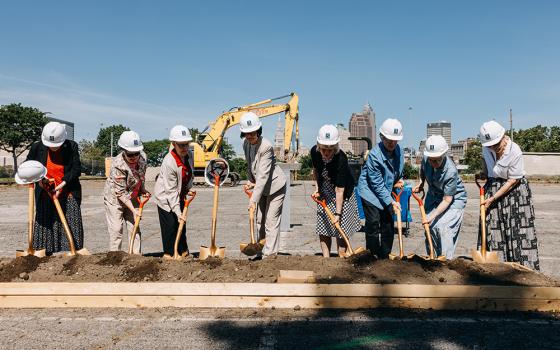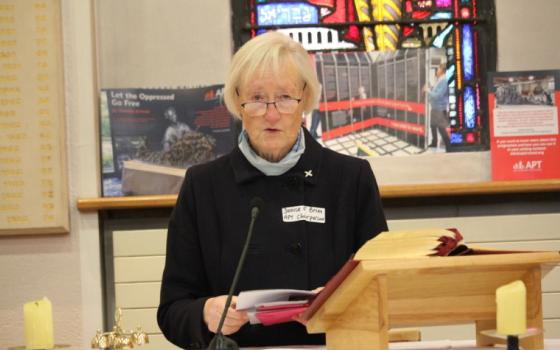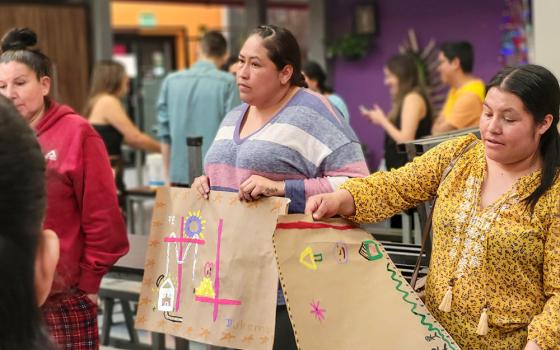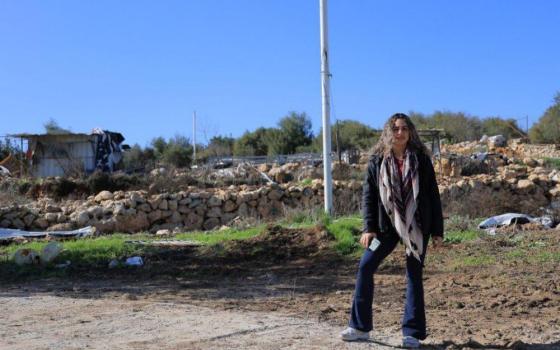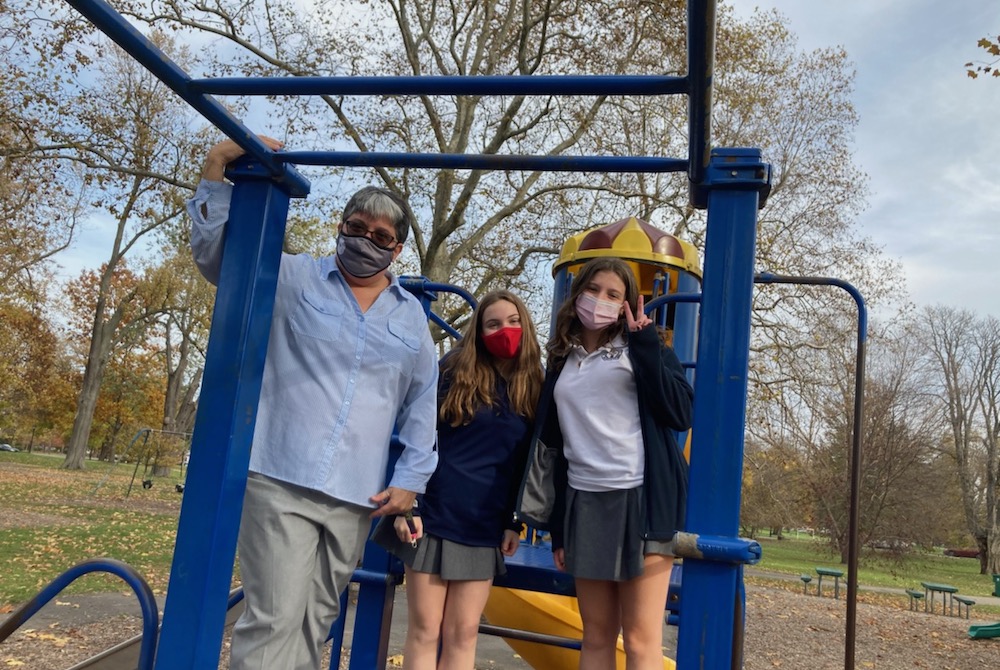
Sister Jenny, left, and students from her theology class enjoy a few moments of joy on a sunny fall day. (Provided photo)
Someone I know was using a treadmill for the first time. They did not know it would go so fast, and they fell off and broke their arm. For someone like me, who has used a treadmill for many years, it's hard to understand how this could happen.
The image of that treadmill going too fast and the person not being able to keep up is the image that comes to mind when I think of life since March. There are not many people out there who have not had to adapt, readapt and adapt again. I have asked myself more than once: How did this happen? How did we get here? I have no answers except for the realization that here we are, eight-plus months into a pandemic, and the only thing certain is uncertainty.
No matter where you find yourselves these days, there is most likely some kind of discomfort and struggle involved. Very little is how it used to be before the pandemic. My life in the classroom is certainly not what it was. My school has most students in class in person and some at home.
The first weeks of school brought a kind of tiredness and frustration I had not experienced previously in my time as a teacher. The first weeks of school, I could only see problem after problem. I saw students who must be 6 feet apart and cannot do group work easily. I was very focused on the learning curve that is involved in learning the technology needed to teach students who cannot be near each other and teach students at home at the same time. Once I did learn creative and interesting ways to engage all students via technology, the same technology tended to pick the most inconvenient times to stop working.
I have experienced students in the physical classroom one day and then on distance learning the next. I get frustrated with trying to figure out who is where when. Everything is paperless, and this requires more knowledge of technology. We could at any time receive notice that we are now on distance learning, meaning that everyone will be learning and teaching from home. There are safety concerns around being with a lot of people every day. The sanitizing alone in between classes can be a bit maddening.
Advertisement
That is a view into what the classroom looks like when I only look at it through the lens of limits. If I entertain a continuous flow of thoughts that focus on what we cannot do, then I get stuck in negativity. I then start to feel like I am on that treadmill and about to fall off.
It became clear to me that I needed something to help me embrace the craziness. I remembered a Brené Brown quote I like that says: "Joy is vulnerable — that's why we're afraid to let ourselves feel it. Don't squander joyful moments by waiting for the other shoe to drop. Lean in and practice gratitude."
I put this quote on a big notecard above my desk so I can look at it in those many moments of frustration this year. At the end of the school day, no matter how frazzled, overwhelmed, frustrated and tired I feel, I write down five ways I have felt joy or things I am grateful for that happened that day.
The first few times, I had to really think about it, because I was still stuck on the too-fast treadmill. Then, I started to realize I cannot control the pandemic, if we are in-person or remote, the infection rate, the ever-changing protocols and unpredictable technology. I can control my response, and this end-of-the-day ritual began to change my experience in the classroom. I began to look for and see the joy the kids bring me on a daily basis.
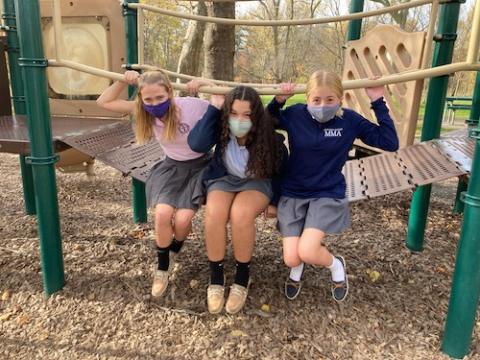
Mount Mercy Academy in Buffalo, New York, students from Sister Jenny's theology class (Provided photo)
I try to really take in the little moments. Students walk into the class happy to see me, and I smile and chat with them. A student wants to show me a picture of her dog, so I look and really engage in the moment. A student understands something she has been struggling to grasp, so at the end of the day, I write that down and acknowledge the part I had in helping her to learn. As the assistant cross-country coach, I started to delight in the progress of my runners instead of lamenting the many weeks of lost practice time because of COVID-19. This past week, several students had difficulty truly listening to and respecting classmates who had different political opinions than they did. I helped facilitate conversations where students could try to understand each other. I was truly grateful for these moments to help students see and hear each other.
The pandemic will one day be over. As the months go by, it becomes more and more likely that real change will come from this. Some changes will be positive, and others might not be. Each one of us will have learned lessons and changed during this time. What are the lessons you want to remember and implement into life after the pandemic? I am by nature a grateful and joyful person, yet there are still more ways to be grateful and live joyfully. I will be working on not squandering joyful moments now and into the future.
[Jennifer Wilson is a member of the Sisters of Mercy of the Americas. She has worked with homeless women and children as a social worker and presently is a theology teacher and the diversity, inclusion and equity coordinator at Mount Mercy Academy in Buffalo, New York.]

